Tillandsia cochabambae
Click thumbnails for full size, scaled to a new window.
Tillandsia cochabambae
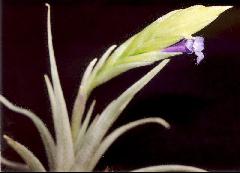
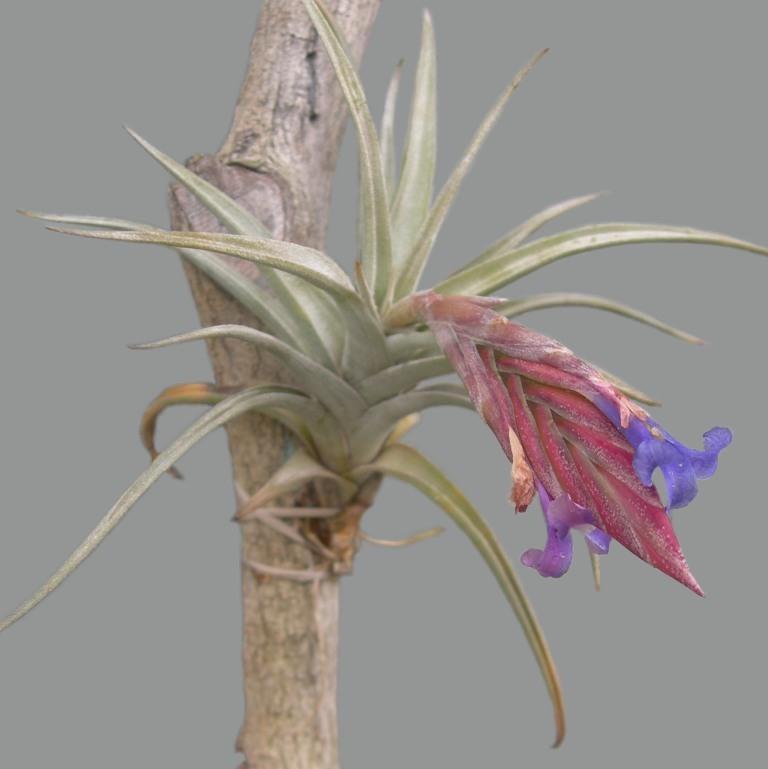
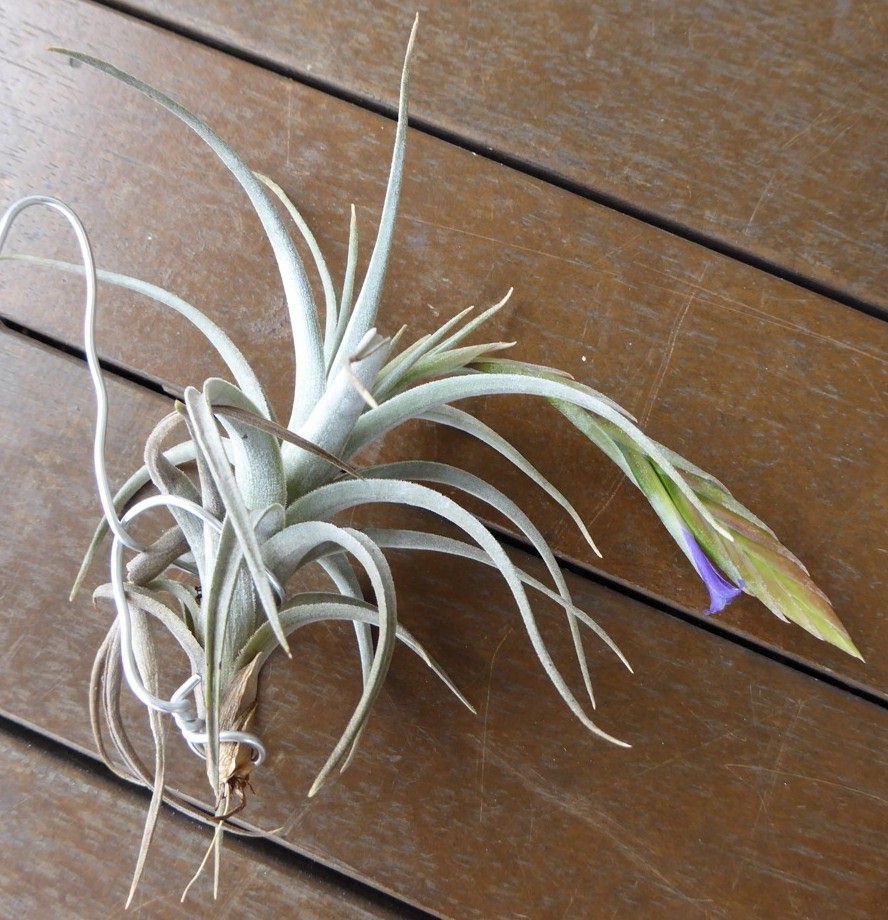
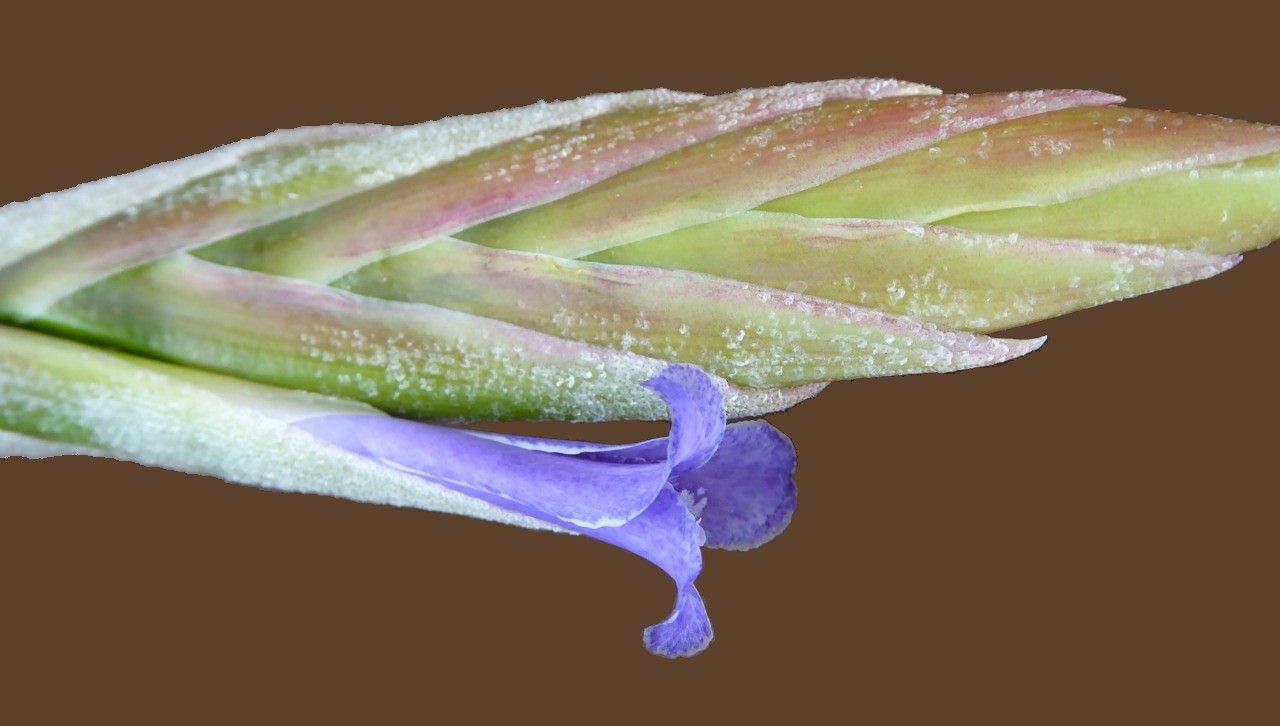
| Ken Woods 09/04 |
Chris Larson 02/11. Len Summers' plant |
Bruce Dunstan 10/16 |
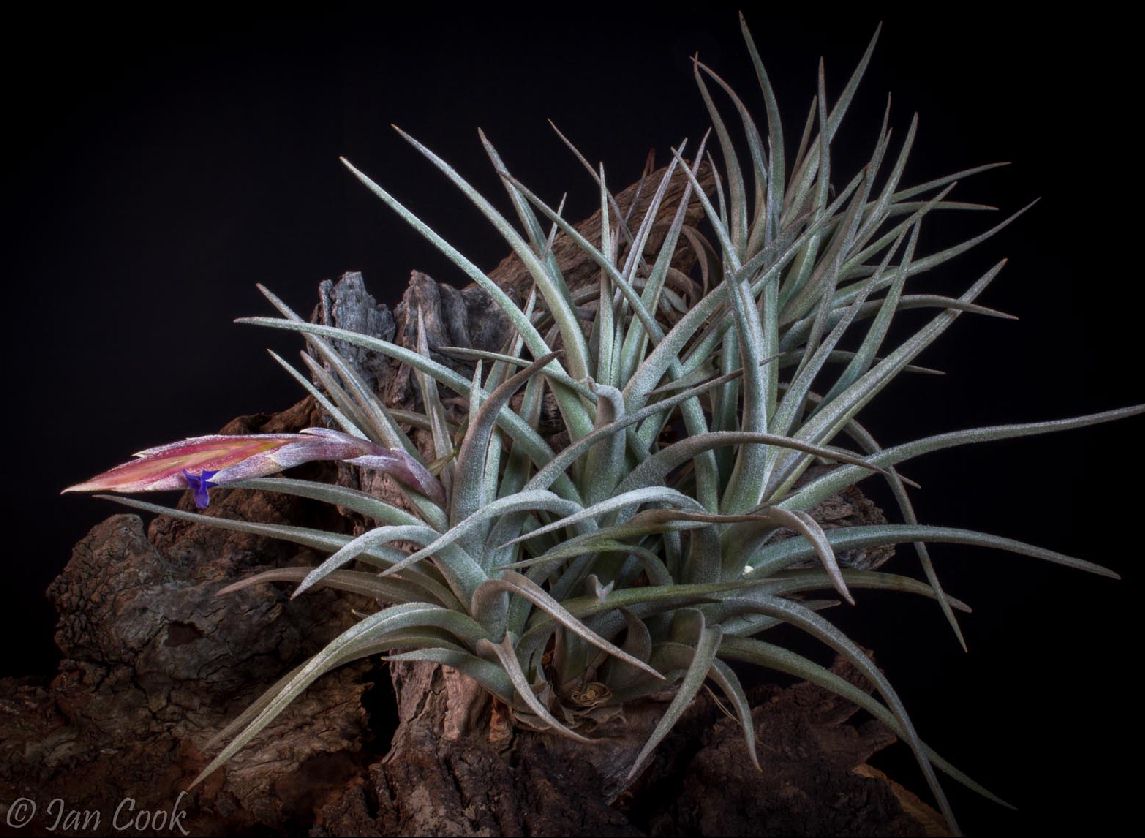
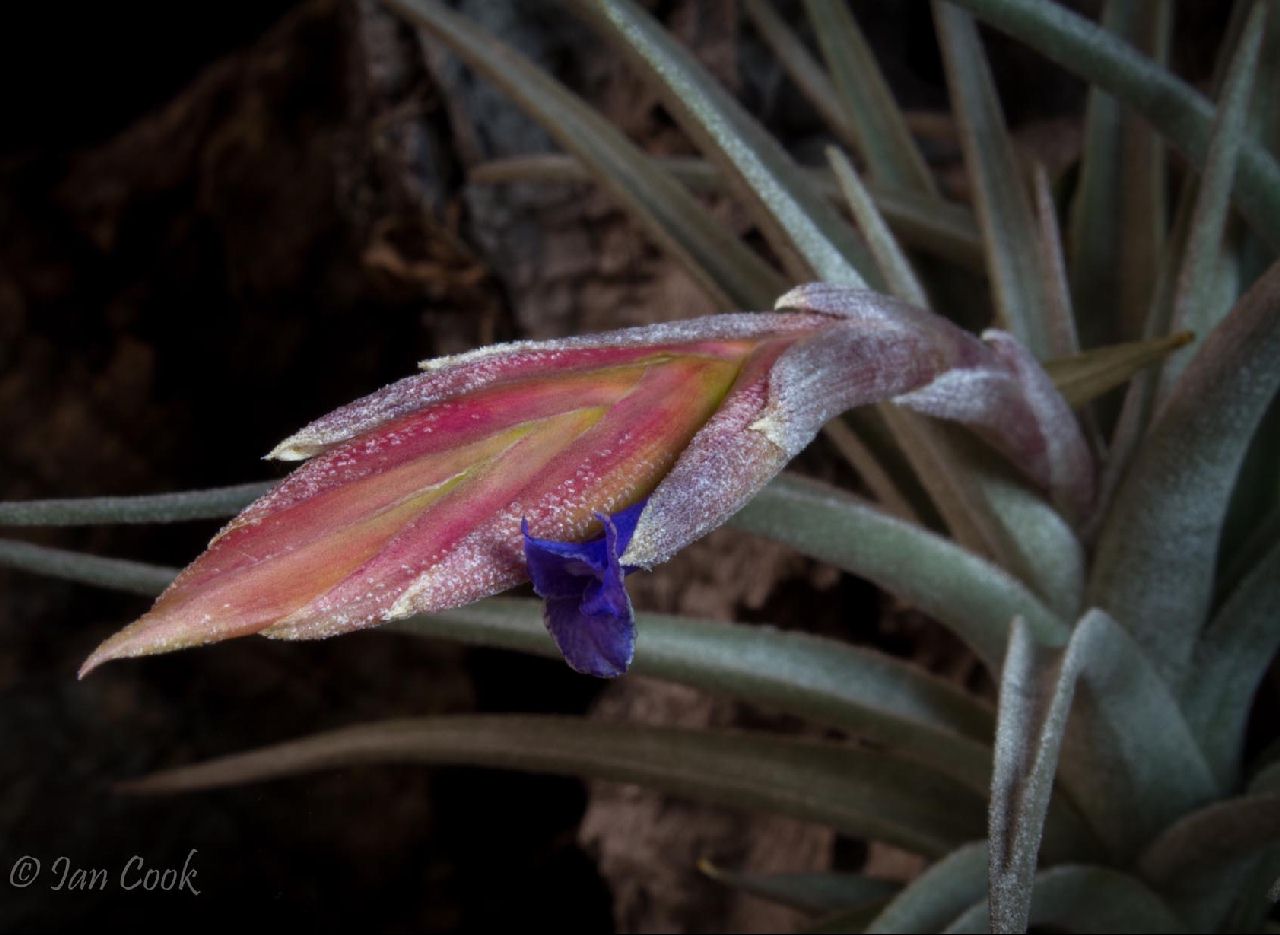
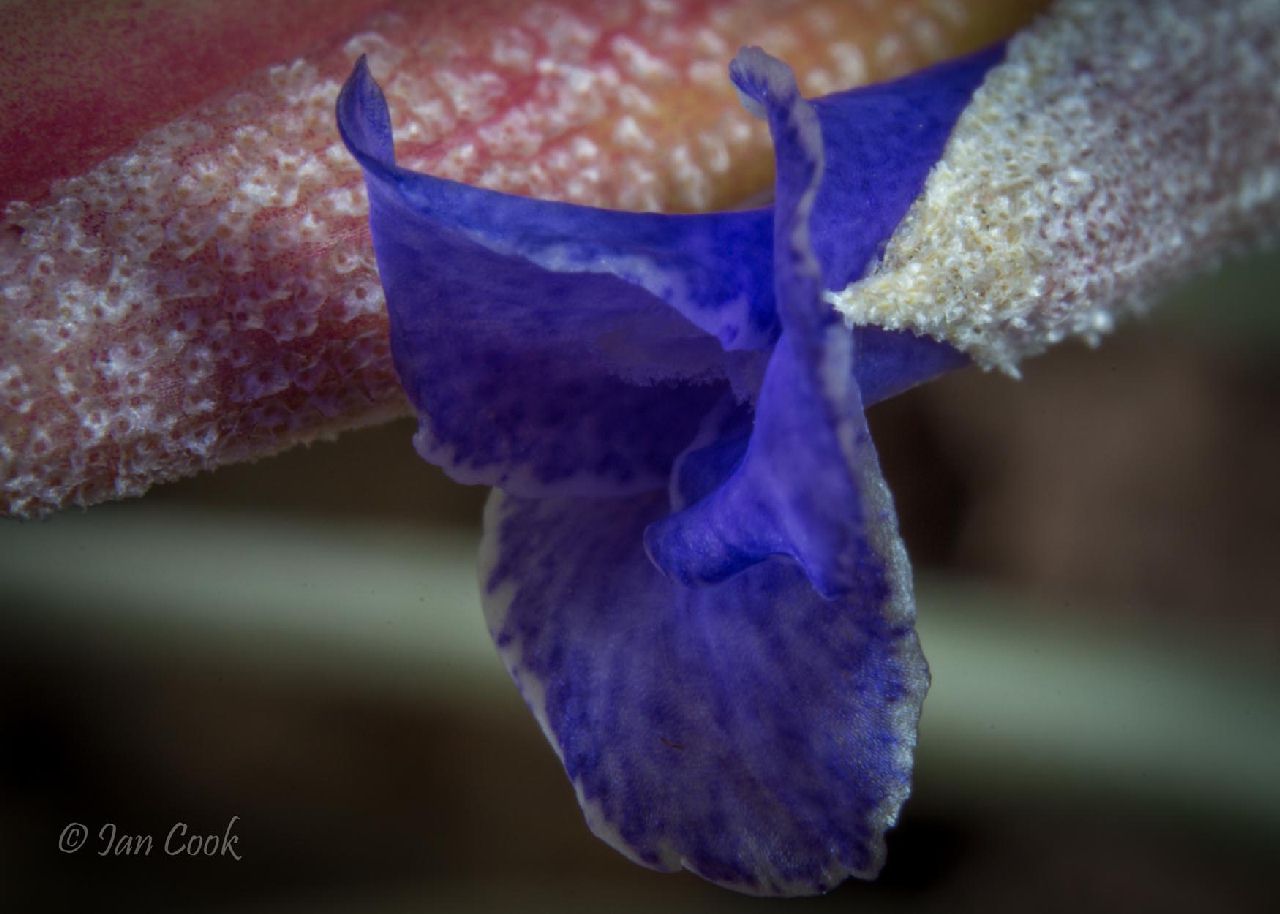
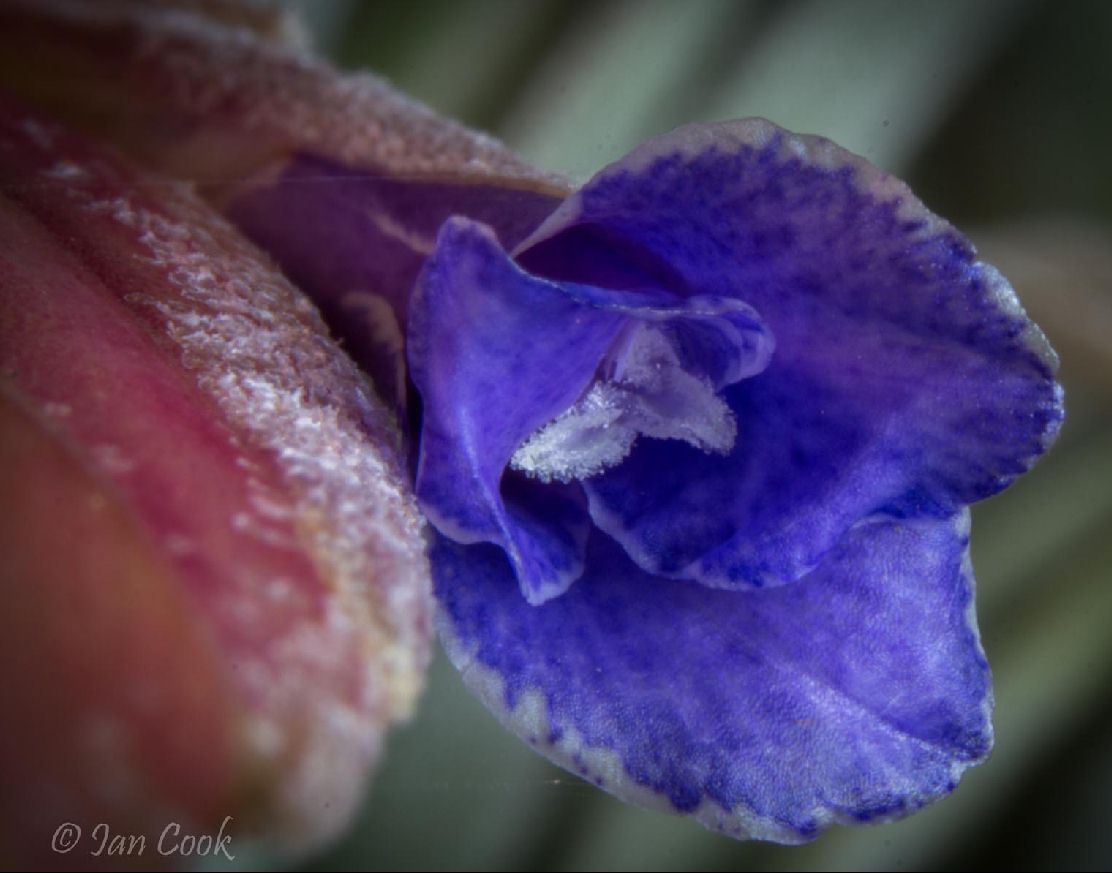
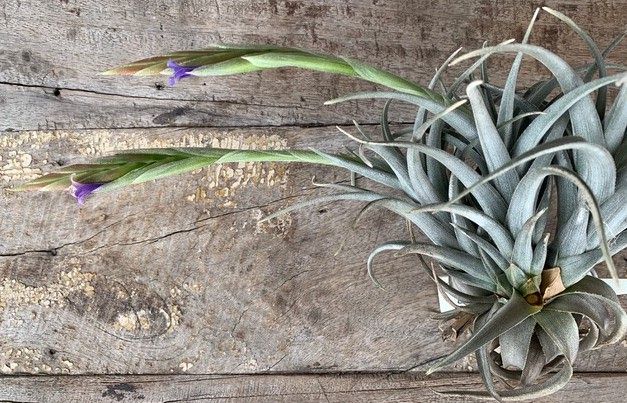
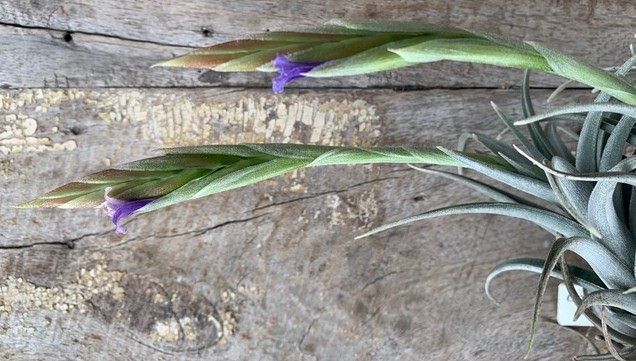
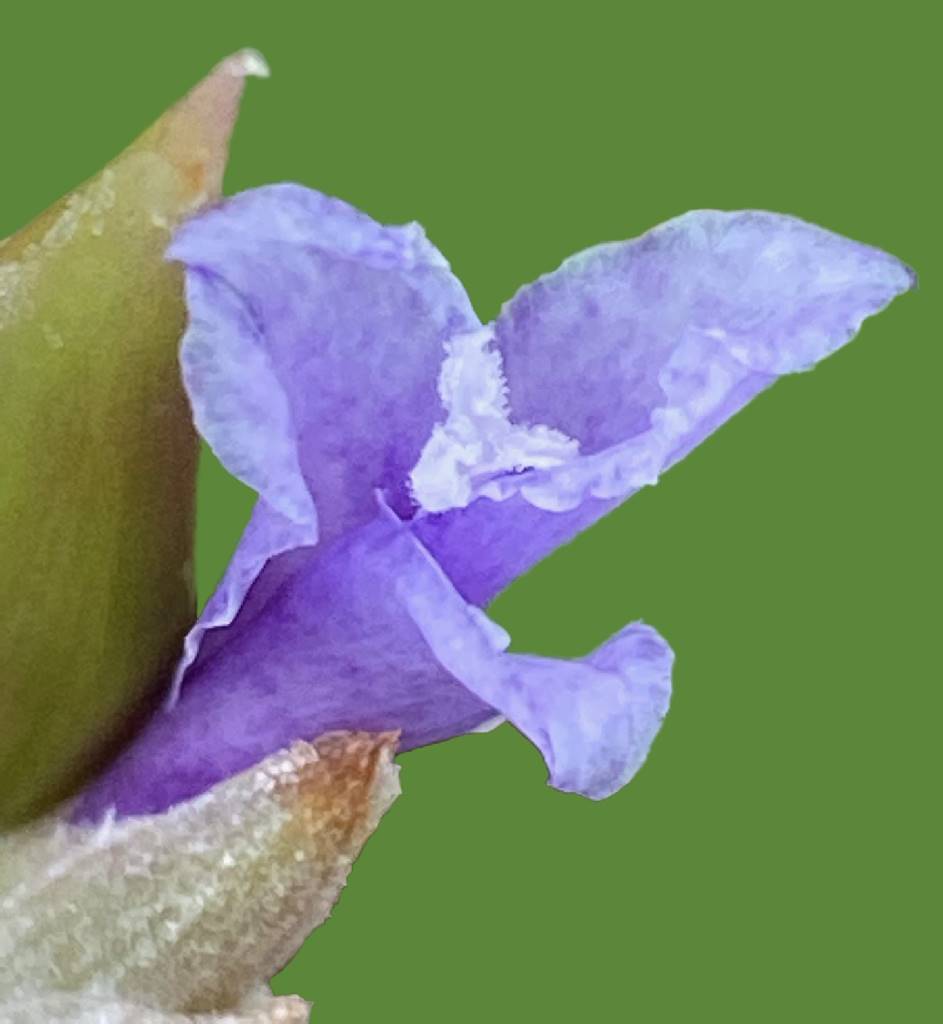
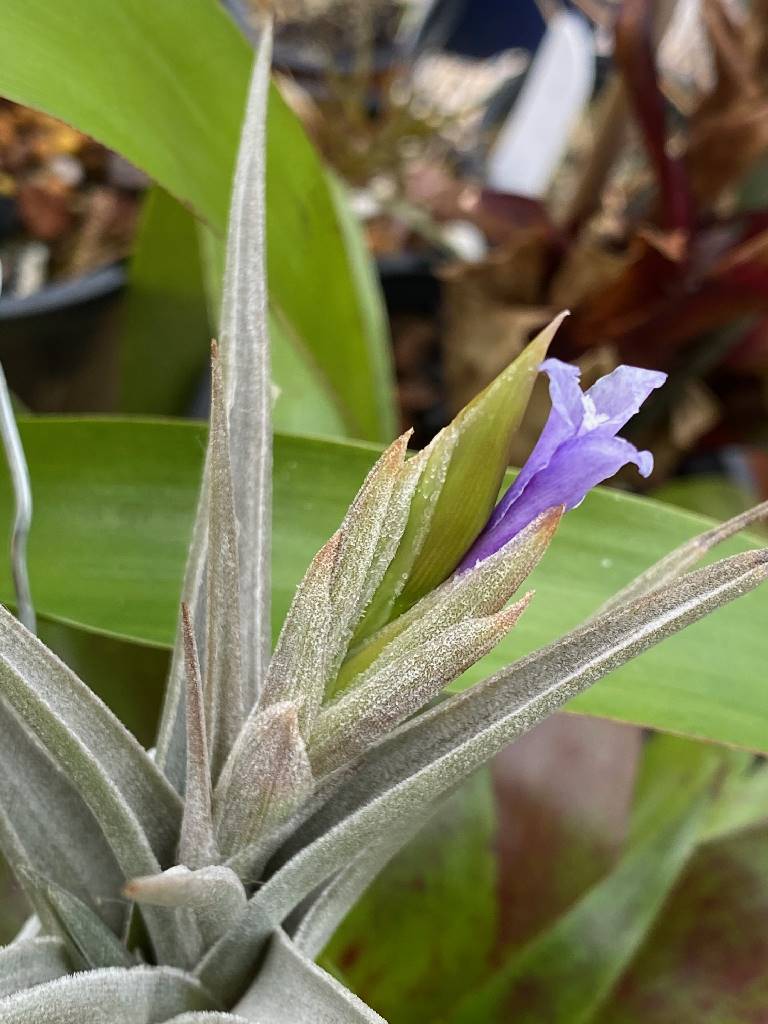
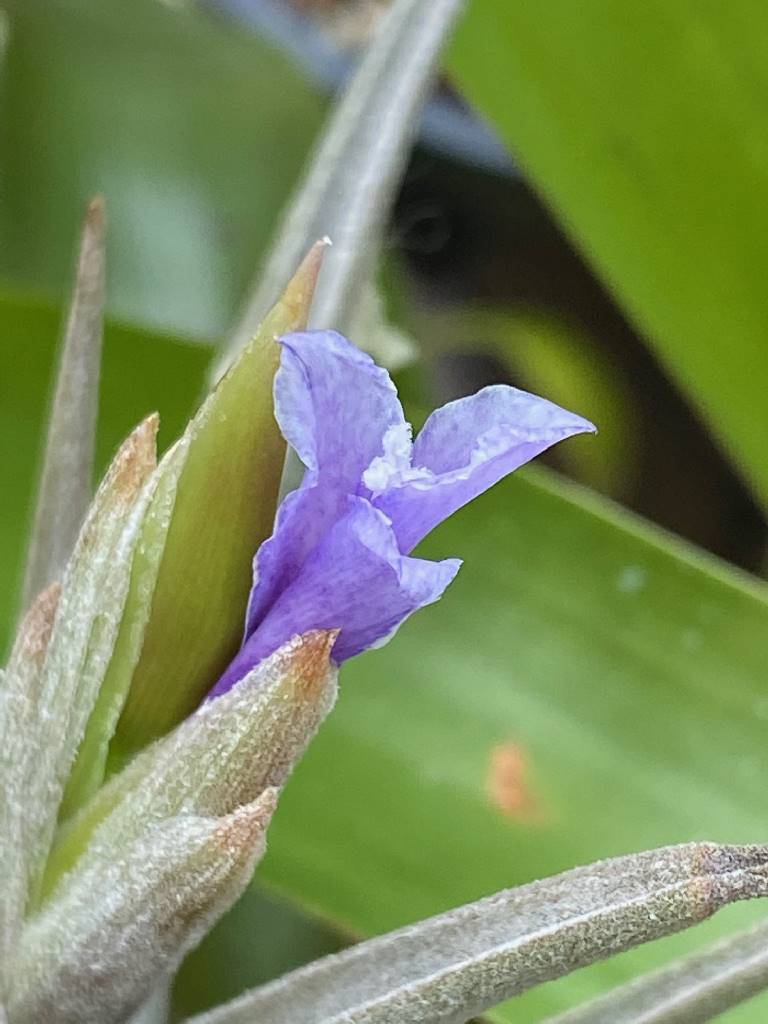
 Dale Dixon ... "I got this one from Peter Tristram in August 2018. I first noticed the inflorescence emerging on the 18th May this year. It’s been a long 4 months. I detected a small tip of petal colour emerging yesterday afternoon. This morning the petals had protruded from the bracts but the flower had not fully opened. This afternoon the flower is open and the stigma visible. Is this species protogynous? Has protogyny been recorded in Tillandsia?"
Dale Dixon ... "I got this one from Peter Tristram in August 2018. I first noticed the inflorescence emerging on the 18th May this year. It’s been a long 4 months. I detected a small tip of petal colour emerging yesterday afternoon. This morning the petals had protruded from the bracts but the flower had not fully opened. This afternoon the flower is open and the stigma visible. Is this species protogynous? Has protogyny been recorded in Tillandsia?"
Andrew Flower ... "This doesn't seem to be uncommon in tillandsias - when artificially transferring pollen around I often notice on an individual flower that the stigma is receptive before the pollen matures: with many of them the receptive stigma exerts beyond the immature anthers for some days and then the anthers extend out beyond the exhausted stigma and mature their pollen. Don't recall anyone recording it though. Perhaps I'll take some sequence photos.
Seeing as T. cochabambae has been raised, I have these behaving interestingly at present so I'll pull out the photos and post later tonight. My collection dates back to the Lotte/Denis Cathcart expedition to Bolivia.
protogynous: "With receptive stigmas before the anthers open" Collegiate Dictionary of Botany, Delbert Swartz, 1971. (well I had to look it up :-)"
Dale Dixon ... "I’d like to see images of this species that you have.
The inflorescence did not protrude much past the leaves on my plant. I wondered if this was because it initiated during winter?
Peter Tristram - do you recall if your parent plant of this one has an inflorescence of this size or is mine an anomaly?"
Andrew Flower ... "Dale - Need to know the diameter of the flower on your plant, please, so I can compare to mine.
I was referring to multiple species with the protogynous habit - wIll look out for some sample(s) to photograph. In case you meant photos of my T. cochabambe currently flowering, will send later."
Dale Dixon ... "Hi Andrew, I’ve just measured the flower diameter. It is 12.5mm diam., petal tip to petal tip. It hasn’t opened any further overnight. It’s very overcast and rainy here today. I’ll check again this afternoon to see if it opens more.
I did a bit more reading overnight and was interested in the description of the length of the rachis. The rachis can get to 12 cm long. However, the description states that the rachis is not visible at flowering (see excerpt below) which seems to correlate with my specimen. I note from images on Bromeliads in Australia that the rachis is certainly elongated, particularly the plants of Bruce’s. Does The rachis elongate after all flowers are spent?
INFLORESCENCE - simple (always ?) to 12 cm long, bent; peduncle - erect to bent, to 6 cm long, densely enclosed by the stem bracts; peduncle-bracts - leaflike at the bottom, the upper ones forming sheaths with short tips, erect, almost enveloping the stem, green, dense white lepidote, at the bottom naked, becoming similar to the flower bracts; spikes - bent, to 5.5 cm long, 1.5 cm wide, acuminate, complanate, ca 6 flowered. after flowering the flower fades at the top; rachis - at flowering not visible, green, naked, flat edged."
Peter Tristram ... "Interesting discussion. I bet there’s a paper on this topic, somewhere! How can you actually be certain that the stigma is receptive? Generally, as soon as the petals open, especially if cross-pollinating. Seed is often set so maybe stigma is receptive either before flower opens or as it opens. Often the anthers split much later too. The style can extend into the anthers or beyond the anthers in some species. I know Bob Hudson has referred to this at the TPE in many discussions, often regarding ionanthas! If fertilisation hasn’t occurred style will elongate in the expectation of receiving foreign pollen. These xiphioides group species vary but I have certainly seen the style elongate and poke out from the petals, same with Anoplophylum species like aeranthos, where the style really elongates over time and the stigma seems receptive at any stage. Research needed?"
Ross Little ... "Dale asked on Thursday 10/9/2020: Is this species protogynous? Has protogyny been recorded in Tillandsia?
As Peter suggested a little research needed so I went and did some reading because I like answers:
In part from: Biology of the Bromeliads by David Benzing. - A protogynous flower becomes receptive before the adjacent stamens are sufficiently developed to shed pollen. The system works because the presence of young and older flowers in the population at the same time makes crossing possible. In some cases a fail-safe device is present. Should a precocious pistil fail to intercept outcrossed pollen, it remains receptive long enough to allow selfing after the associated anthers mature. One blossom every few days seems to be the rule in tillandsioids with unbranched inflorescences and also in some with compound flowering stalks. Many Tillandsias (subgenus Tillandsia) appear to be protogynous with the style emerging from the corolla tube several hours before the anthers dehisce."
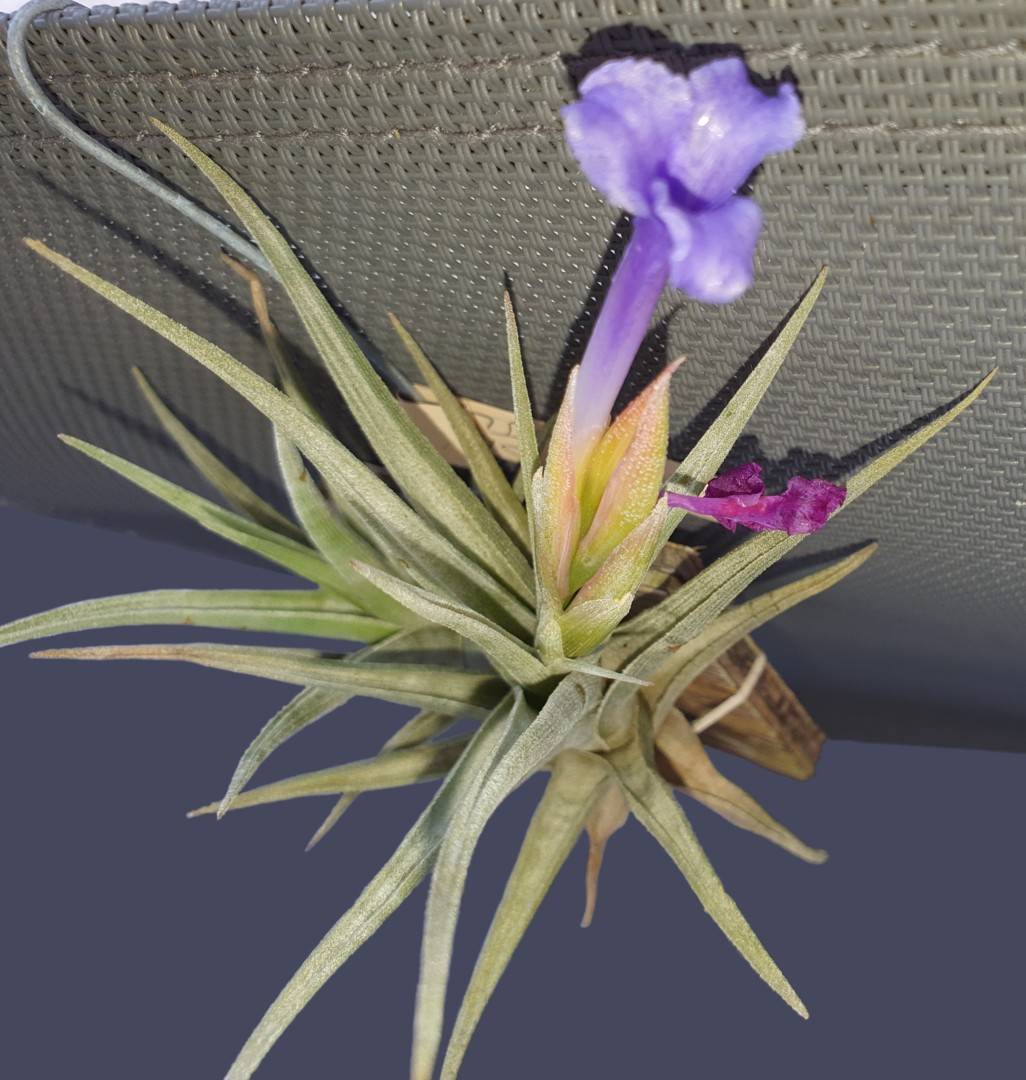

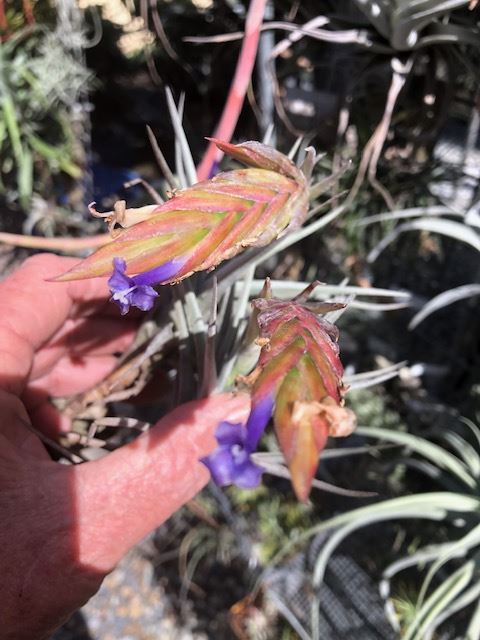
| Pam Butler 11/20 |
John Olsen 11/21 |
Dale Dixon ... "I got this one from Peter Tristram in August 2018. I first noticed the inflorescence emerging on the 18th May this year. It’s been a long 4 months. I detected a small tip of petal colour emerging yesterday afternoon. This morning the petals had protruded from the bracts but the flower had not fully opened. This afternoon the flower is open and the stigma visible. Is this species protogynous? Has protogyny been recorded in Tillandsia?"



| Ray Clark 11/24 from seed 1995 from Len Colgan |
TILLANDSIA COCHABAMBAE. Gross & Rauh. Sp nova. Die Brom.2: 14-15. 1986
Tillandsia boliviensis BAKER similis, sed ab ea differt in characteribus sequentibus:
Plants breviter caulescens ad basim radices agentium valde geminans. Vaginae pallida violaceae-fuscae, squamae non distendentes, sed appressae. Scapus folia eminens. Inflorescentia simplex, paulum recurvata. Bracteae florales imbricatae, dense lepidotae, ad basim glabrae, virides. Spicae cum 5-6 floribus; rhachis spicae angulato-applanatus, non alatus, non conspicuus ad anthesim. Sepala non glabra, sed ad apicem disperse lepidota, posteriores subcarinata, non alata-carinata. Flores de T. boliviensis non scriptae, apud T. cochabambae petala caerulea-violacea, ad basim alba. Stamina valde inclusa filamentis plicatis. Stylus cum stigmatibus longior quam antherae.
Holotypus: RAUH 40 609 (23.8.1978), in herb. inst.bot.system. univ.heidelb. (HEID).
Patria et distrbutio: saxicolus, Vallis de Cochabamba, 2700 m.s.m, Bolivia, Prov. Cochabamba.
PLANT - Making a large clump, with 3-6cm long ,lcm thick rooting stems which abundantly spread from the base. Single rosette flowering to 17cm high from the base where the bottom leaves start. Leaves ca 10 making a large rosette 8cm high and 10cm diameter.
LEAF SHEATH - Indistinct, 2cm high, 1.5cm wide, lighter than the blade, pale violet, top side of the base glabrous, underneath dense lepidote.
LEAF BLADE - Erect to spreading, thin triangular, 1.5cm wide next to sheath, tapering to a long narrow tip, ca 10cm long, channelled, dense appressed lepidote. Scales with green centre.
INFLORESCENCE - Simple (always ?) to 12cm long, bent.
SCAPE - Erect to bent, to 6cm long, densely enclosed by the scape bracts.
SCAPE BRACTS - Leaflike at the bottom, the upper ones forming sheaths with short tips, erect, almost enveloping the stem, green, dense white lepidote, at the bottom glabrous, becoming similar to the flower bracts.
SPIKE - Bent, to 5.5cm long, 1.5cm wide, acuminate, complanate, ca 6 flowered. After flowering the flower fades at the top.
RHACHIS - At flowering not visible, green, glabrous, flat edged.
FLORAL BRACT - Erect, longish lancelike, short tipped to 3cm long, 0.8cm wide, grey green, dense appressed lepidote, occasionally with age almost glabrous, at the base naked, exceed the sepals.
FLOWER - Subsessile, to 4cm long.
SEPALS - Longish lancelike, to 20mm long, 5mm wide, acuminate, membranous, green, thin, the posterior ones slightly keeled, with large white scales.
PETALS - Tongue shaped, weakly reflexed at the tip, 4cm long, 5mm wide, blue violet, at the bottom white.
STAMENS & STYLE - Deeply enclosed, filaments white, plicate in the middle section. Anthers yellow, Style with lobes exceed the anthers.
HABITAT - Growing on rocks, Cochabamba Valley, 2700m, S. BOLIVIA.
DIFFERS FROM T. BOLIVIENSIS IN THAT:
1 - Rooting stems abundantly spreading from the base.
2 - Leaf sheath pale violet brown.
3 - Scales not spreading, partly appressed.
4 - Flower stem exceeds leaves.
5 - Inf lorescence simple, bent.
6 - Floral bracts imbricate, dense lepidote, at the bottom naked, green, occasionally with age almost naked.
7 - Rhachis of the 5-6 flowered spike flat edged not winged.
8 - At anthesis rhachis not visible.
9 - Sepals not naked, the tips scattered lepidote.
10 - Posterior sepals subcarinate not wing keeled.
11 - Flower of T. boliviensis white and T. cochabamba petals are bluish violet, at the bottom white.
12 - Stamens and style deeply enclosed.
13 - Filament pleated
14 - Style with lobes exceed the anthers
Tillandsia cochabambae is a decorative, very easily cultivated small Tillandsia, that reproduces itself by many offsets, all at the base of the bare, leafless, rooted stems.
T. cochabambae seems to be variable regarding the flower colour; so much so that there are forms with pale blue to white flowers.
Updated 19/11/24



















